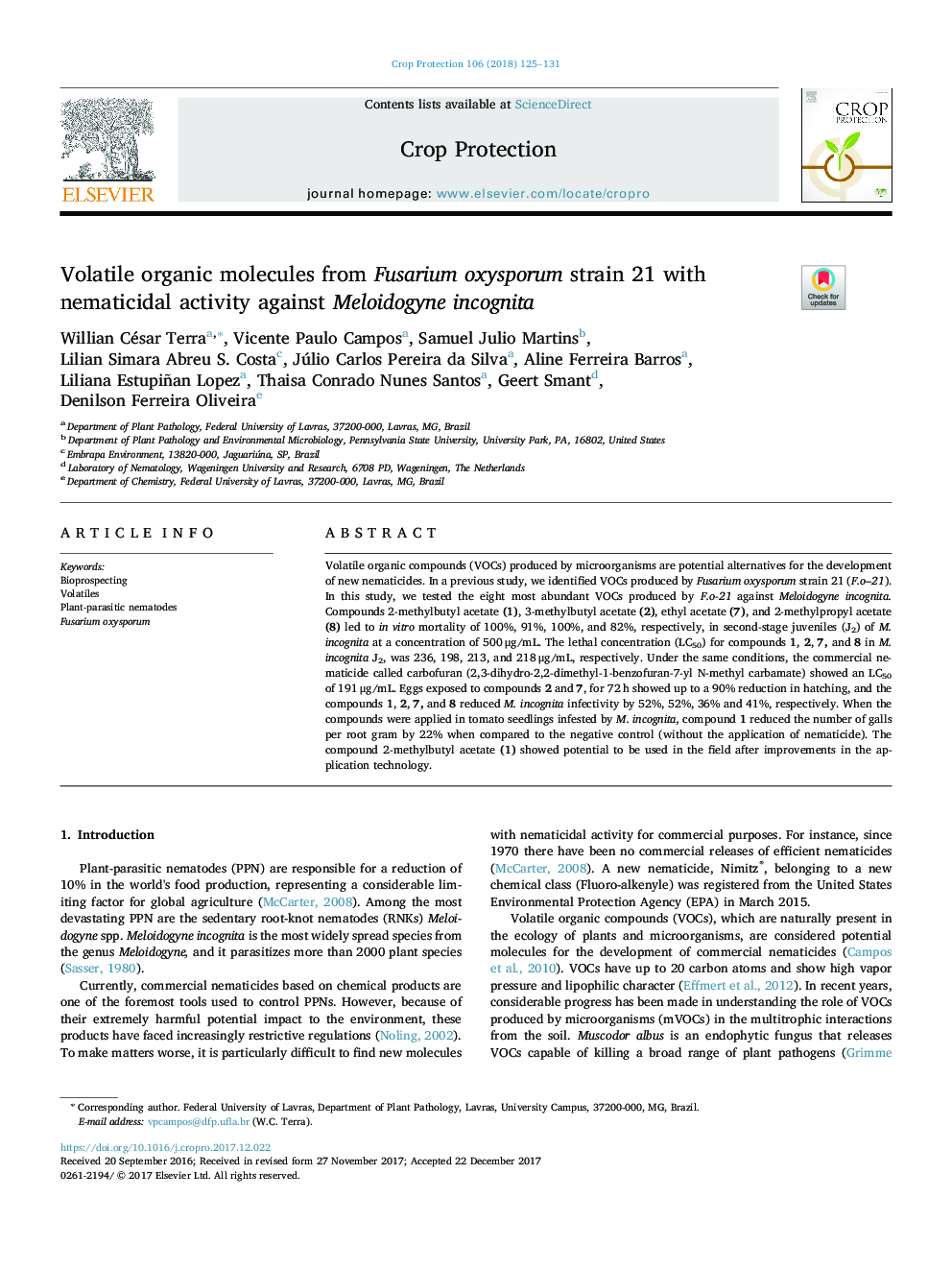| Article ID | Journal | Published Year | Pages | File Type |
|---|---|---|---|---|
| 8878253 | Crop Protection | 2018 | 7 Pages |
Abstract
Volatile organic compounds (VOCs) produced by microorganisms are potential alternatives for the development of new nematicides. In a previous study, we identified VOCs produced by Fusarium oxysporum strain 21 (F.o-21). In this study, we tested the eight most abundant VOCs produced by F.o-21 against Meloidogyne incognita. Compounds 2-methylbutyl acetate (1), 3-methylbutyl acetate (2), ethyl acetate (7), and 2-methylpropyl acetate (8) led to in vitro mortality of 100%, 91%, 100%, and 82%, respectively, in second-stage juveniles (J2) of M. incognita at a concentration of 500â¯Î¼g/mL. The lethal concentration (LC50) for compounds 1, 2, 7, and 8 in M. incognita J2, was 236, 198, 213, and 218â¯Î¼g/mL, respectively. Under the same conditions, the commercial nematicide called carbofuran (2,3-dihydro-2,2-dimethyl-1-benzofuran-7-yl N-methyl carbamate) showed an LC50 of 191â¯Î¼g/mL. Eggs exposed to compounds 2 and 7, for 72â¯h showed up to a 90% reduction in hatching, and the compounds 1, 2, 7, and 8 reduced M. incognita infectivity by 52%, 52%, 36% and 41%, respectively. When the compounds were applied in tomato seedlings infested by M. incognita, compound 1 reduced the number of galls per root gram by 22% when compared to the negative control (without the application of nematicide). The compound 2-methylbutyl acetate (1) showed potential to be used in the field after improvements in the application technology.
Related Topics
Life Sciences
Agricultural and Biological Sciences
Agronomy and Crop Science
Authors
Willian César Terra, Vicente Paulo Campos, Samuel Julio Martins, Lilian Simara Abreu S. Costa, Júlio Carlos Pereira da Silva, Aline Ferreira Barros, Liliana Estupiñan Lopez, Thaisa Conrado Nunes Santos, Geert Smant, Denilson Ferreira Oliveira,
